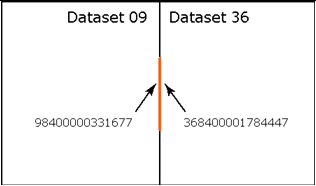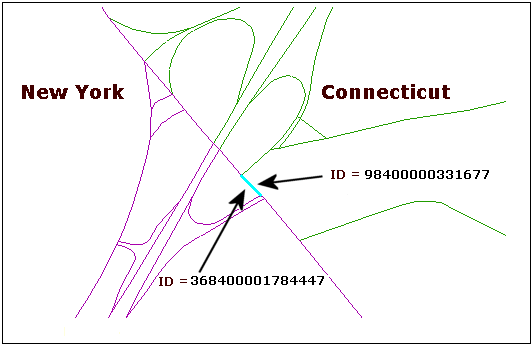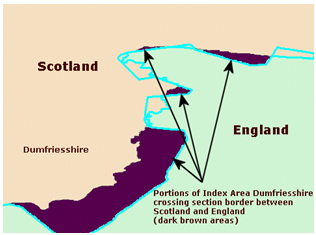Line Feature on a Dataset Border
Figure: Line Feature on a Dataset Border

| ID | FEATTYP | TABEXT | TOID |
|---|---|---|---|
| 98400000331677 | 4110 | nw | 368400001784447 |
Explanation:
Figure: Map of the Line Feature on a Dataset Border Example

| How to Use MultiNet Shapefile and OSL | |
Data features can cross or lay on a dataset border. When this happens, MultiNet® indicates these conditions through Relationships, split indicators, and conversion records.
See "Dataset and Section Crossing" for a description of rules and examples for dataset crossing in both Shapefile and GDF formats. Section crossing is also explained in that section but does not apply to Shapefile or OSL file.
Below are examples of a line feature on a dataset border and an area feature crossing a dataset border in Shapefile format.
Figure: Line Feature on a Dataset Border

| ID | FEATTYP | TABEXT | TOID |
|---|---|---|---|
| 98400000331677 | 4110 | nw | 368400001784447 |
Explanation:
Figure: Map of the Line Feature on a Dataset Border Example

Figure: Area Feature Crossing a Dataset Border

| ID | FEATTYP | TABEXT | TOID |
|---|---|---|---|
| 18261605004044 | 9200 | oa06 | 18260621700190 |
Explanation:
Figure: Index Area Dumfriesshire (oa06) Crossing Dataset Borders
